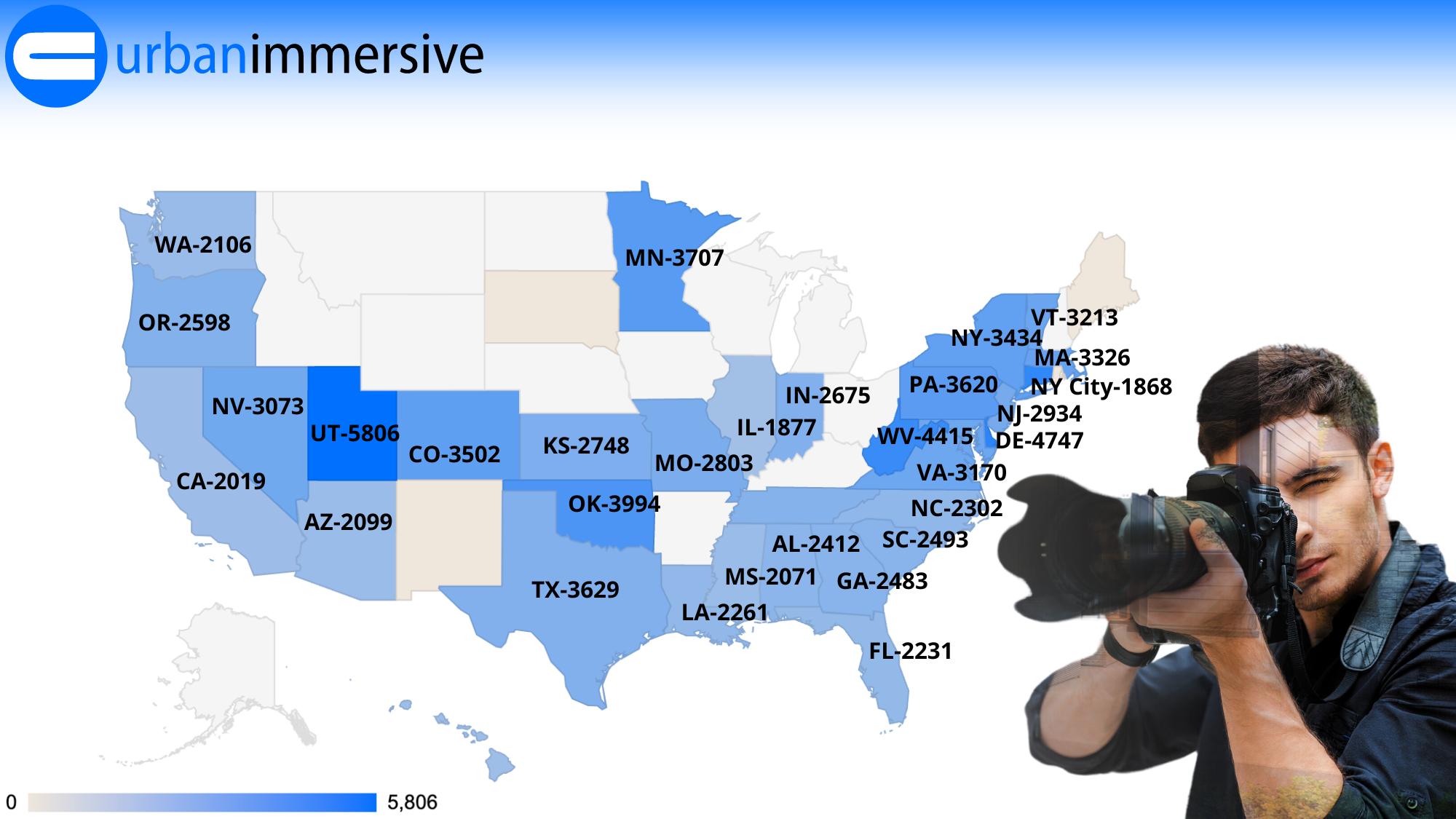
Date Online: 2023-11-20
Introduction:
The growth of 3D tours in real estate marketing has leveled off. Matterport's stock performance, with a significant portion of their revenue still tied to the real estate sector, mirrors this trend. Despite resources and advertising efforts, Matterport faced a net loss in 2023, with modest growth in subscription revenues.
This isn't solely a Matterport issue; it indicates a broader challenge within the 3D Digital Twins industry, affecting companies like Urbanimmersive.
The expected rapid growth curve in this sector hasn't fully materialized, especially not with 3D Digital Twins in their current form.
So, what's the problem with 3D tours?
What's missing, and how can these challenges be overcome?
Let's delve into the reasons behind this stagnation and explore why we believe we have the solution.
Real Estate’s Mixed Feelings About 3D Tours::
The real estate community exhibits a conflicted stance toward 3D tours. While many sellers request them, real estate agents and marketers often view them as mere listing tools rather than as essentials for selling houses. In fact, many agents and marketers believe that 3D tours are not necessary for selling properties, and their perspective might be accurate.
79% of Listings Sold Without 3D Tours
Our database reveals that only 21% of listings feature a 3D tour. Given the boost that Covid-19 lockdowns provided to digital solutions like 3D digital twins, if 3D tours had proven to be significantly valuable, we would likely have already seen these statistics reversed. While we believe the industry is moving in this direction, the current data indicates that, despite their potential advantages, 3D tours remain a challenging sell.
Misleading Statistics in 3D Tours:
It's common to encounter claims that houses with 3D tours sell faster than those without. However, this statistic can be misleading. Agents tend to reserve 3D tours for properties with high potential as a strategy to maximize their return on investment. Our database supports this, showing that 64% of listings with 3D tours also have a higher number of photos, suggesting more comprehensive marketing efforts. Therefore, it's plausible that these high-potential listings would sell faster regardless of the inclusion of 3D tours. Agents knows it and aren't buying those stats.
Reflecting Market Sentiments:
Urbanimmersive's 2019 market test data supports this perspective. Throughout that year, Urbanimmersive provided a complimentary 3D tour with every photoshoot ordered from its Canadian brand. Despite this offer, only 31% of the free 3D Tour URLs were accessed by agents, and merely 14% of those accessed were shared on agents' social media or real estate portals. How many times do you see an agent sharing a 3D tour on social media.
Yet, interestingly, at the end of the test, the vast majority of participating agents reported that the 3D tours were beneficial for their business. This apparent contradiction suggests that 3D tours are predominantly utilized for securing listings rather than as tools for active marketing or sales. This pattern sheds light on the real estate agents' perception of the value of 3D Digital Twins in the market, indicating a limited willingness to invest in them.
The Effect On Pricing:
Initially seen as a premium service with prices exceeding $500, 3D tours have now become accessible for under $130. This shift signals a decreasing perceived value among agents. In the past, agents were willing to invest in 3D Digital Twins, viewing them as tools to enhance their marketing prowess. However, as 3D tours have become more commonplace, their perceived value has seen a corresponding decline.
This 'race to the bottom' in pricing has been further spurred by services like Zillow offering free 3D tours. Looking forward, it seems likely that 3D tours might evolve from a paid service to a complimentary free offering in the near future.
Up to this point, the market has largely been observing the 'race to the bottom' unfold within the realm of 3D digital twins. However, Urbanimmersive's development of 3D Digital Twins Video Fusion is poised to change the game
Introducing 3D Digital Twins Video Fusion:
Our solution to these challenges is the 3D Digital Twins Video Fusion (3D VF). This new generation of 3D tours, made of 360-degree video imagery, offers a more dynamic and engaging experience. Unlike traditional 3D tours, 3D VF allows viewers to navigate a property while also absorbing rich video content. This blend of interactivity and the emotional appeal of video content has the potential to redefine 3D tour for real estate marketing.
Why 3D VF is a Game-Changer:
3D Video Fusion (3D VF) not only showcases properties in an immersive 3D environment but also highlights the expertise and personality of the marketers and agents through the video content production. Unlike traditional 3D Digital Twins, 3D VF serves as a powerful branding tool that accentuates the unique attributes and professionalism of agents.
It is well-acknowledged that the primary goal of real estate agents is to secure new homes for sale under contract. This objective is becoming increasingly crucial in light of recent lawsuit in regards to agents commission structures, which are poised to change the dynamics of commission splits as we know them. Without homes under contract, there are no sales, and consequently, no revenue. In this context, 3D Video Fusion emerges as an invaluable tool, enabling agents to connect with viewers and effectively communicate their brand, expertise, and personality.
Scalability of 3D Video Fusion:
3D Video Fusion stands out as the simplest process for creating 3D digital twins in the market. Its accessibility and scalability are its core strengths, especially considering the industry's keen sensitivity to pricing. This simplicity is due to the fact that 3D VF does not require specialized applications, extensive training, or costly hardware. Agents can conveniently purchase a 360 camera from Amazon and begin crafting high-quality 3D Video Fusion content from their very first attempt, making it an efficient and user-friendly solution.
Enhanced Value Propositions: 2D Floor Plans & Indexable Audio-to-Text:
Beyond being more engaging than traditional 3D digital twins, 3D Video Fusion is loaded with valuable features. One key capability is generating highly accurate 2D floor plans from a simple 360 video. This technology offers one of the most precise Gross Living Area (GLA) measurements in the market, second only to expensive laser-enabled technologies like the Matterport Pro3.
When utilized with best practices, 3D Video Fusion (3D VF) can achieve an impressive level of precision, with a variation of only plus or minus 1%. In the realm of real estate marketing, this accuracy surpasses that of the leading floor plan service providers.
Another innovative feature of 3D Video Fusion is its ability to convert video audio into indexable text and captions. This functionality is not just beneficial for enhancing SEO content but also can be utilized within the 3D VF itself for navigating through the 3D environment.
Such added capabilities significantly elevate 3D VF over traditional 3D Digital Twins, making it suitable for various applications including marketing, automated reporting for home inspections, product reviews for local businesses, and more.
3D VF: Accretive Pricing Advantage for Photographers:
3D Video Fusion (3D VF) distinguishes itself from traditional 3D Digital Twins by introducing an accretive pricing model that benefits the most in-demand photographers. The 3D VF can transform photographers into pivotal 'masters of ceremony,' enabling them to actively engage with agents during 360 video recordings. Such interaction not only amplifies the agents' presence but also renders the recordings more captivating and dynamic.
Photographers proficient in creating outstanding 3D VF content will see a growing demand for their services. Their expertise is set to command a higher value over time, distinguishing them from the prevalent saturation in traditional 3D tour services where beginners may rival experienced professionals. It's akin to photographers evolving into 'influencers'; agents will seek out those whose 3D VF work significantly boosts viewer engagement.
Conclusion:
3D Video Fusion technology effectively addresses the main challenges currently inhibiting the adoption of 3D digital twins in real estate marketing. By boosting viewer engagement and simplifying the production process, it opens a promising path for rejuvenating the market and catalyzing new growth. Additionally, 3D Video Fusion provides increasing value for photographers, elevating their demand and potentially counteracting the ongoing trend of decreasing returns seen with traditional 3D digital twins in this sector. In essence, 3D Video Fusion isn't just a solution—it's the future direction for real estate marketing. The way forward is clear: 3D Video Fusion is the path to success.










